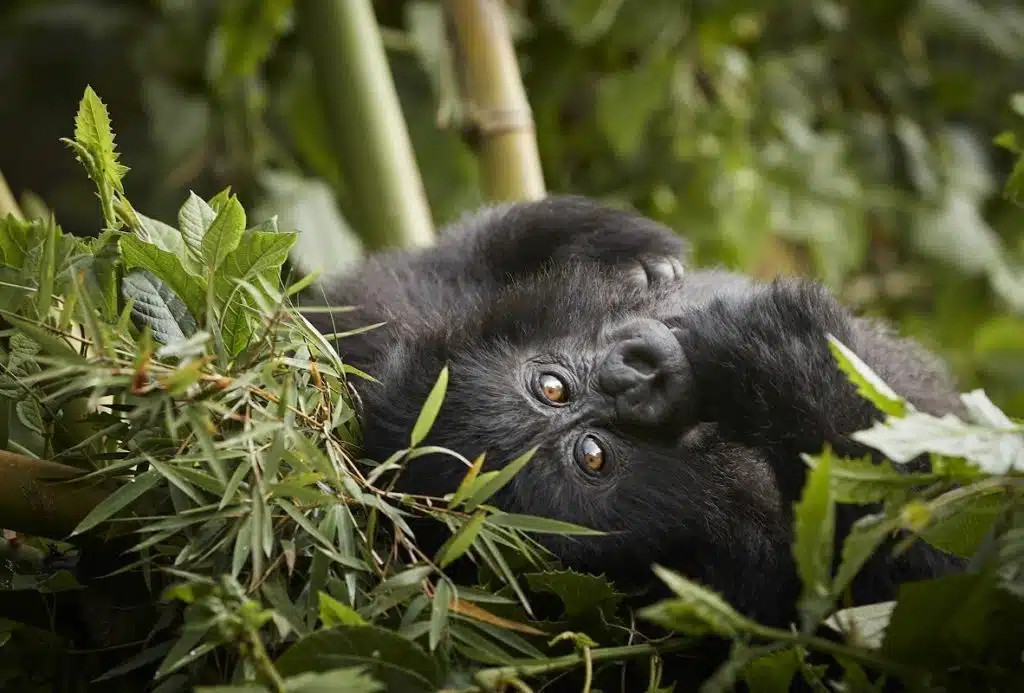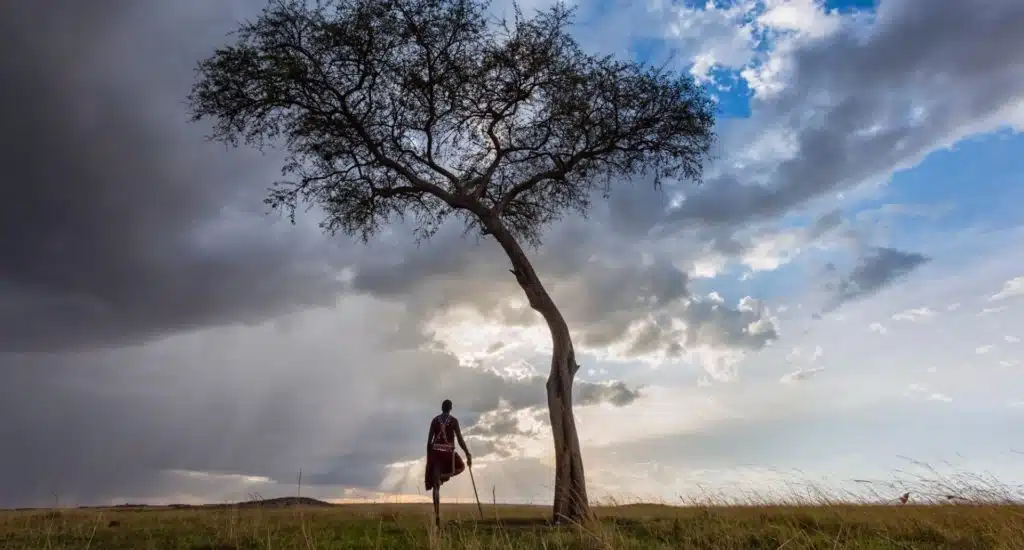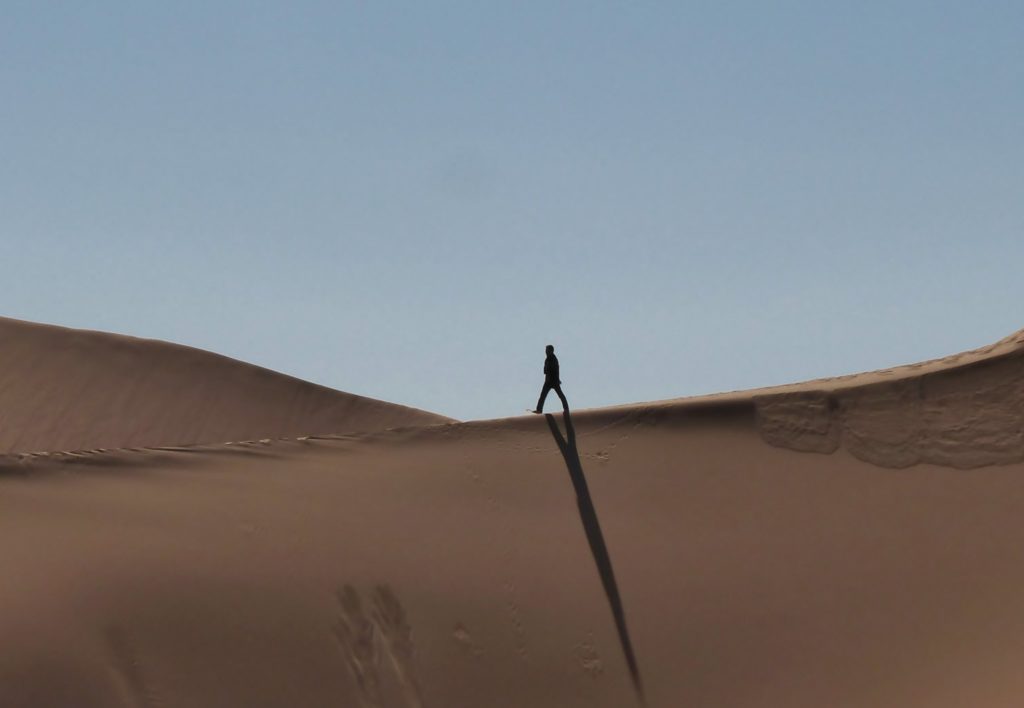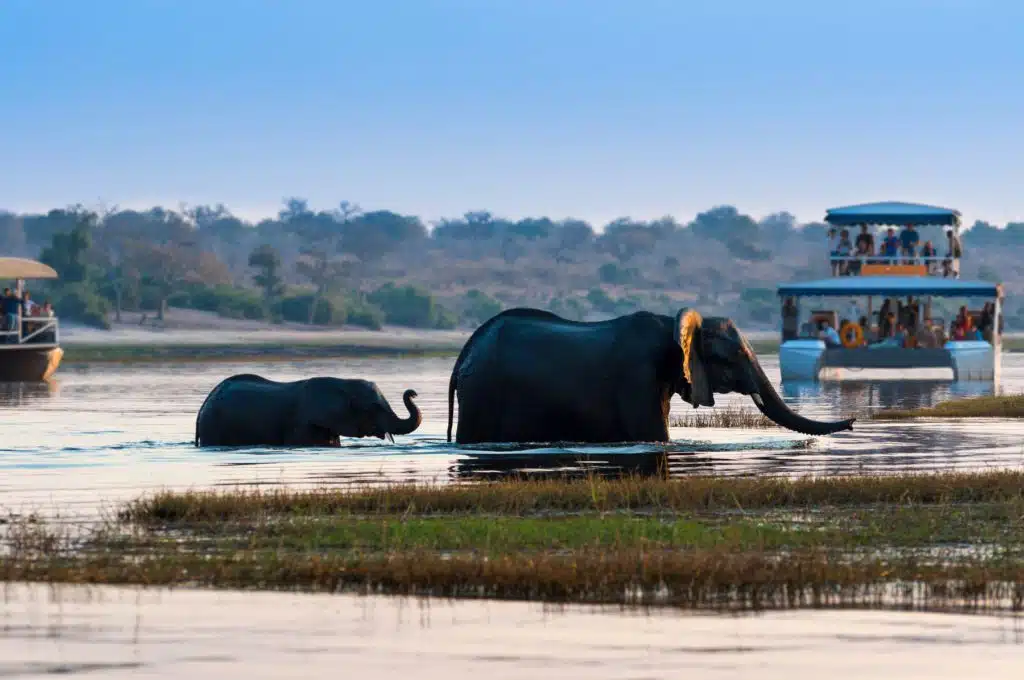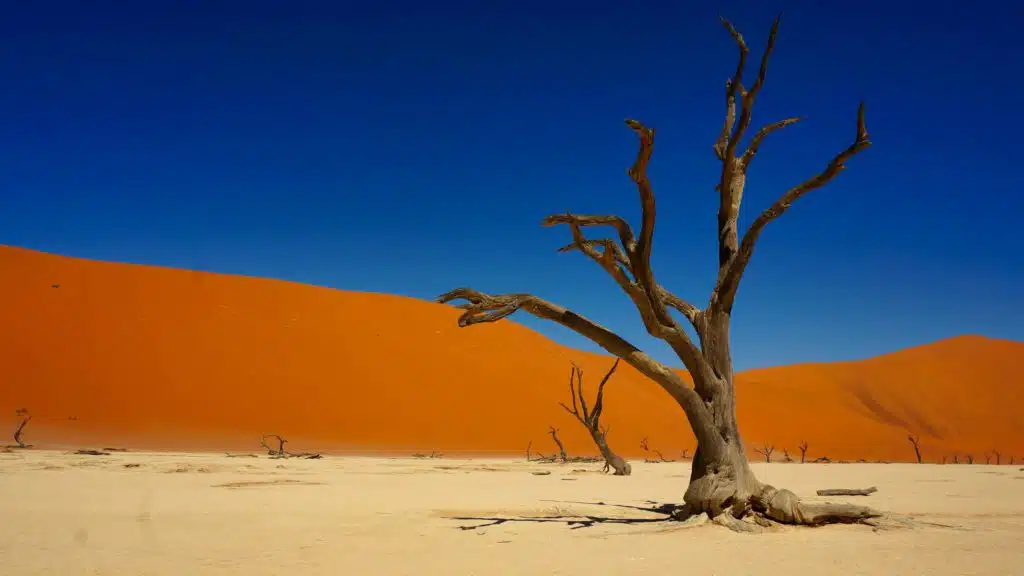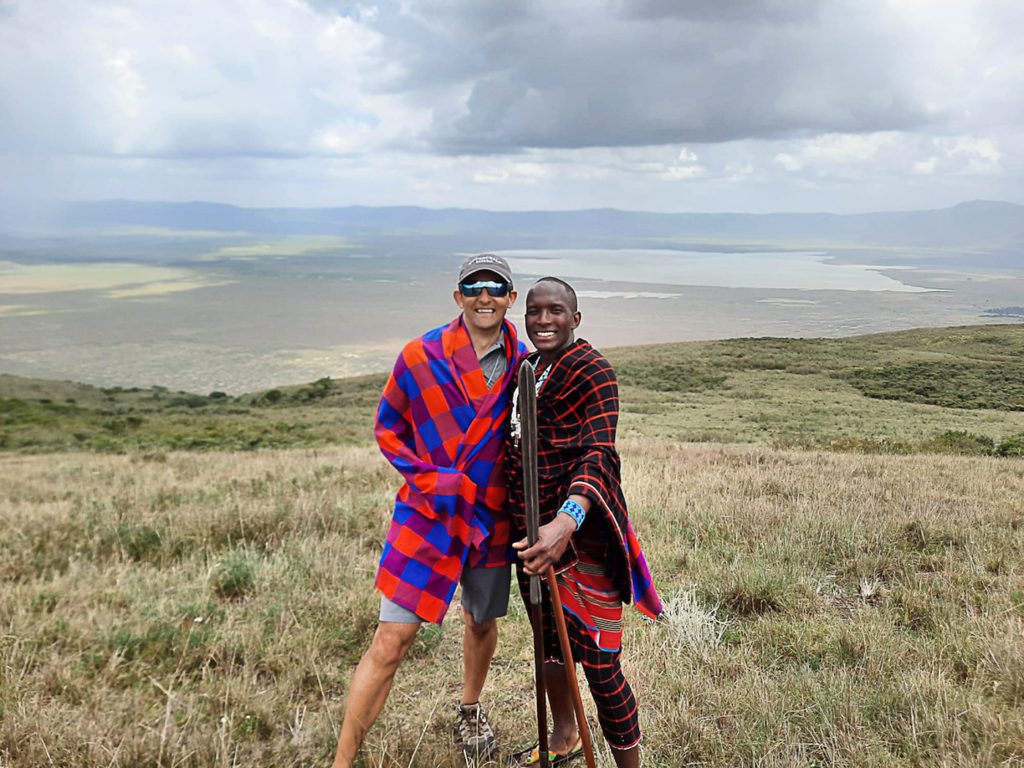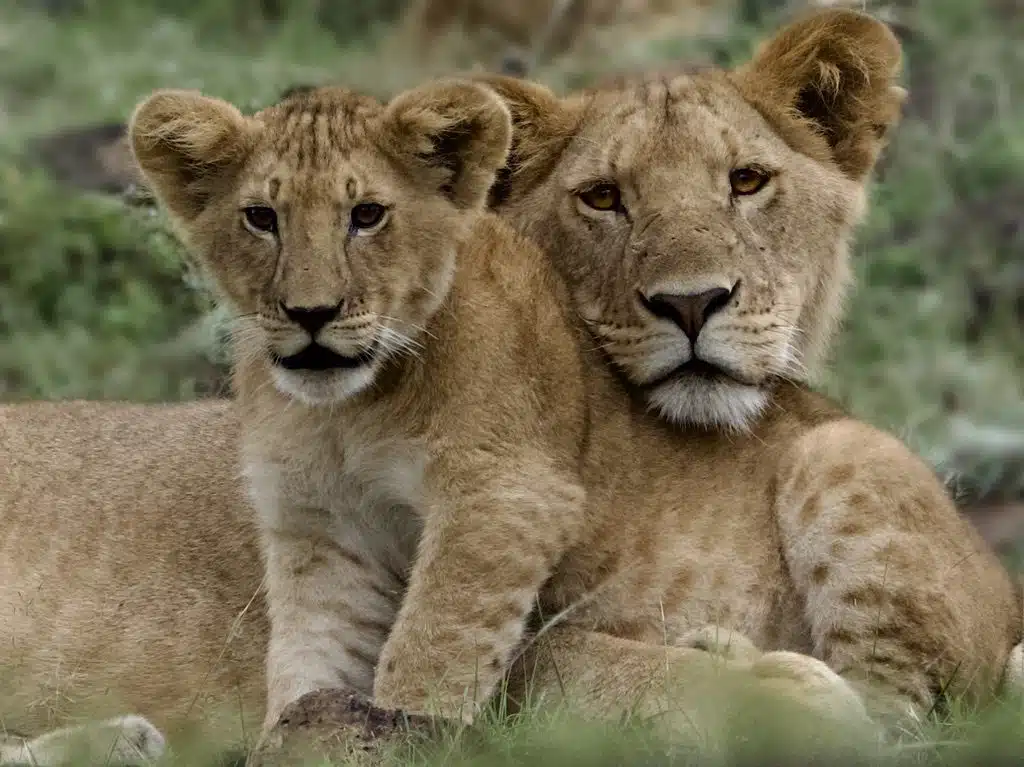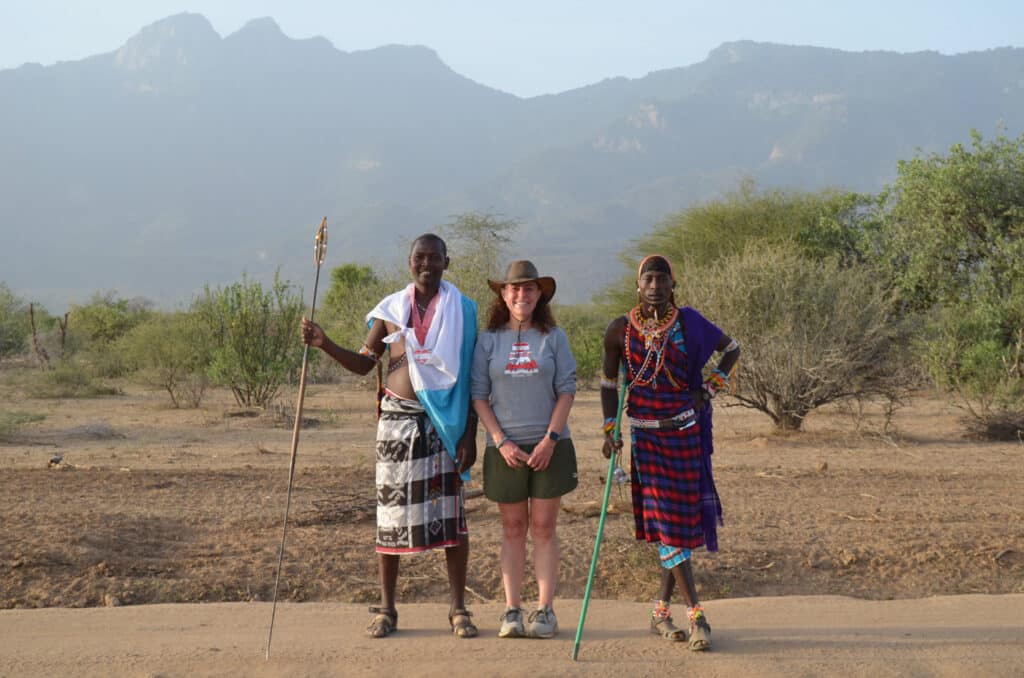AN AFRICAN WALKING SAFARI
Step into the Wilderness
Few safari experiences are as profoundly exhilarating and unforgettable as an African walking safari.
Of course, however you may choose to explore this wonderful continent, myriad magical moments will present themselves and you will be left with a photo album filled with incredible images, and a mind and heart filled with memories to last a lifetime.
But when stepping from the tents and lodges, the game vehicles and helicopters, and venturing out onto the plains under your own steam, the barriers are dropped, the separation is gone and you become completely immersed in your surroundings. The minutiae of the land spring to life: the hustle and bustle of the insect world, the large, five-padded footprints of lion through the sandy surface, the birds circling in the air overhead, unseen under the canopy of a game vehicle, the discarded zebra bones of somebody’s dinner. This is Africa in real life, unfettered, unhindered and so invariably unseen, except on an African walking safari.
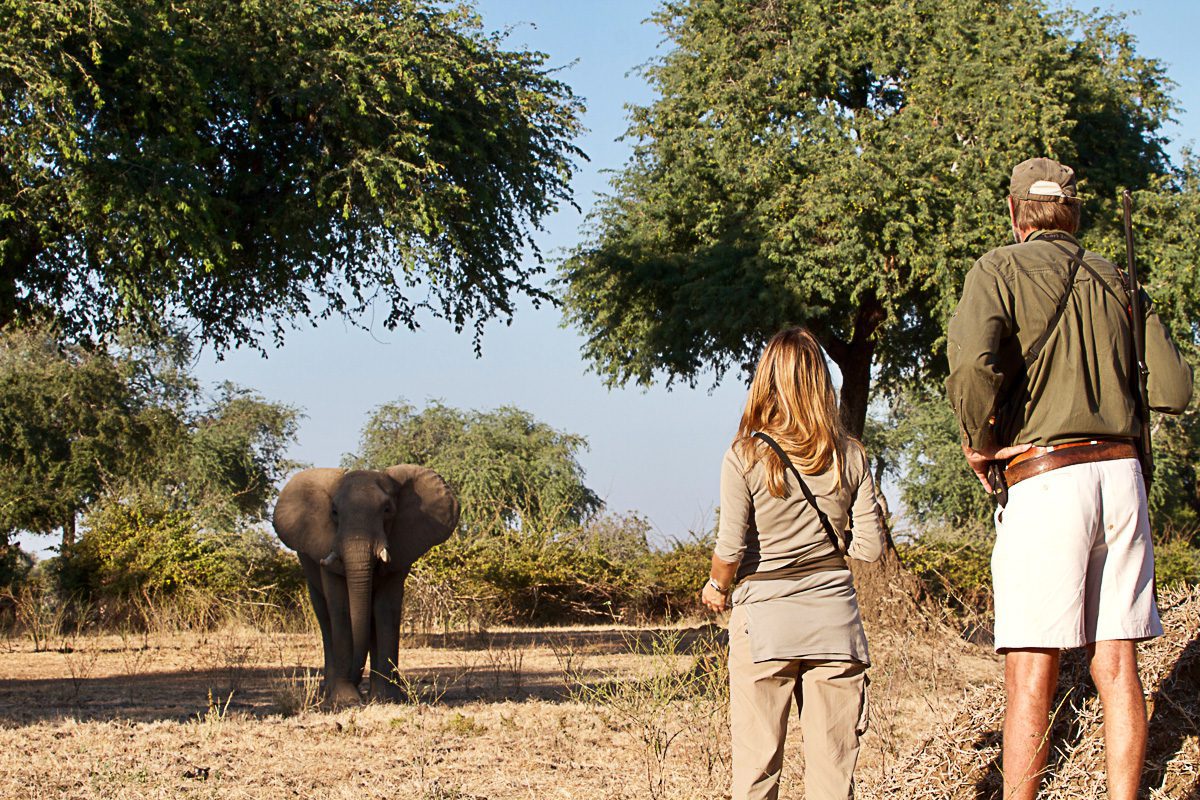
More than that, by removing yourself from the steel cages and security of a game vehicle or from behind the glass of a lodge or hide, you are now at one with wildlife – equal, connected, and even a little vulnerable.
Rest assured, stringent safety measures are vehemently upheld, expert staff are highly trained and armed in preparation for the incredibly unlikely event of needing a rifle, and will only allow you in areas deemed safe.
You can’t simply leap from a four-by-four in the middle of the Maasai Mara and go wandering through wildebeest by their millions or tiptoe up to a prowling lion for the perfect portrait photo; in fact there are surprisingly few locations in which you are both safe and allowed to walk.
However, if the opportunity arises, put your best foot forward and take a step in the right direction: an African walking safari is an experience we should all indulge in if ever we get the chance.
So walk this way and discover six of our favourite African walking safaris:
Kicheche Camp to Camp
Kenya is vast and spectacular. It is the iconic safari destination of Karen Blixen’s Out of Africa, home to the Maasai people and the Great Migration and well established as one of the premiere countries for a luxury safari. But walking is often prohibited or ill advised.
Lion and leopard lurk invisibly in the tall tawny grasses, hippos – Africa’s most deadly mammal – keep a watchful and protective eye over their territory, and disgruntled buffalo are known to charge first and ask questions later.
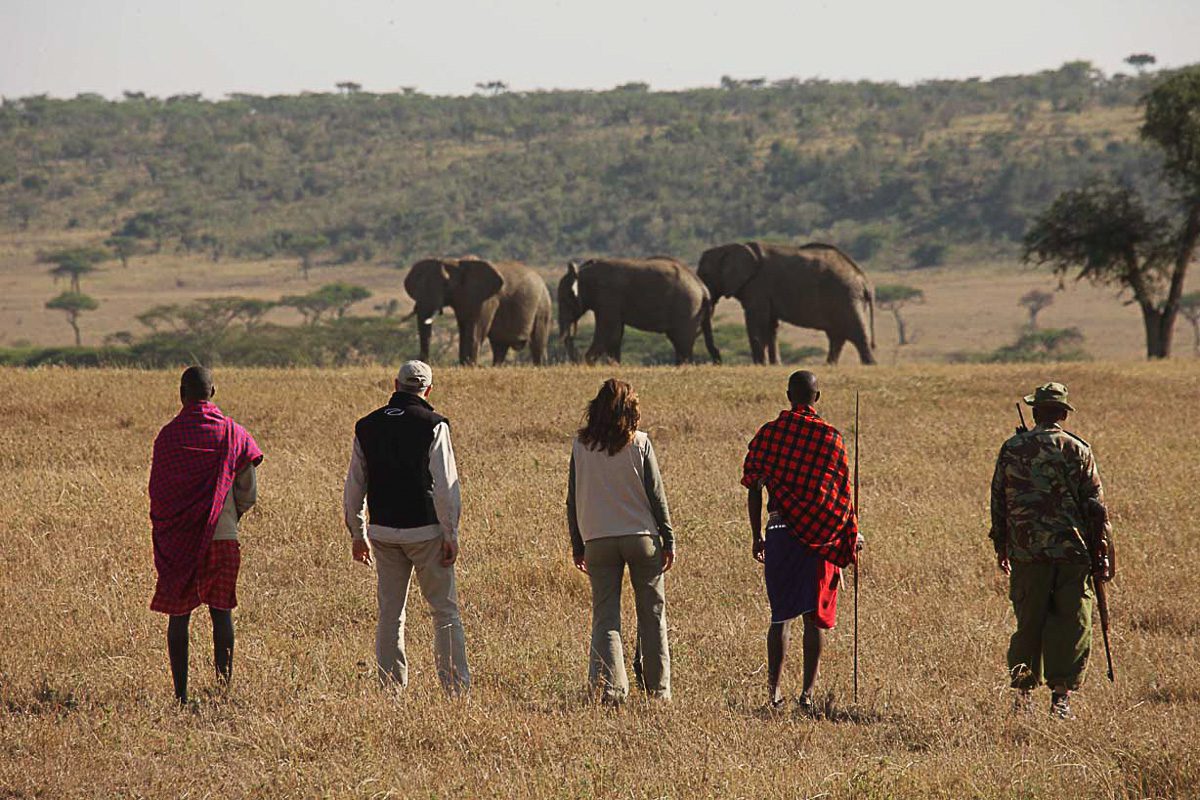
These are of no concern when in a game vehicle, and attacks on visitors are unfathomably rare, thanks in large part to the expert staff knowing their region implicitly and keeping their guests safe at all times… and not allowing them to walk off into the bushlands.
Tucked away in the Olare Motorogi Conservancy lies Kicheche – Bush Camp, one of a collection of luxury camps scattered across southern Kenya that offer the potential to perambulate the plains.
Olare Motorogi is a Maasai pastoral region of the great Mara and is carefully monitored on every level, from wildlife populations to camp and tourism impact. Only five camps exist within the entire conservancy, all required to be semi-permanent, creating the least impact possible on the landscape.
This somewhat unique combination provides less than one hundred guests across all camps the chance to walk as the Maasai do, embracing the land with absolute respect, and just a hint of caution. The wise Maasai seem to sense nature as much as see it, able to spot even the most ardently hidden creature and habitually knowing the movements of the wildlife, providing you the ideal guide to navigate the bushlands.
The Big Five are appeal enough for any safari traveller visiting Kicheche’s Bush Camp, but so much more can be spotted on an African walking safari. Painted dogs, cheetah, wildebeest and the familiar grazers of the grasslands, and the bizarre and fascinating secretary bird on its stilt-like legs. Such a rich abundance of wildlife can be found, and all with precious few others to share it with.
While short strolls and day hikes are more than possible, one of the absolute joys of Kicheche is being able to walk between camps. Taking several hours, you wake in the cool dawn, pack a small day pack and set out onto the plains with your Maasai guide while your baggage gets transferred to camp number two, Kicheche’s Valley Camp in the neighbouring Naboisho Conservancy, to await your arrival. Transferring camps by foot allows you to see a new view with every step, never once retracing your path.
For the adventurous, walking safaris of several days are also available, with small dome tents pitched each evening for you to sleep out under the stars, enjoying the evening around a campfire before retiring to bed, safe in the assurance of the ever-watchful eye of your Maasai night guard.
Walking with the San at Jack’s Camp
Like the Maasai of Kenya and Tanzania, the San people of Botswana have an intrinsic connection with the natural world. But unlike the Maasai, the San are traditionally semi-nomadic hunter-gatherers, reading signs in the sand that will bring them to food and water. Indistinguishable to the untrained eye, they follow this trail of Braille to sustain their families.
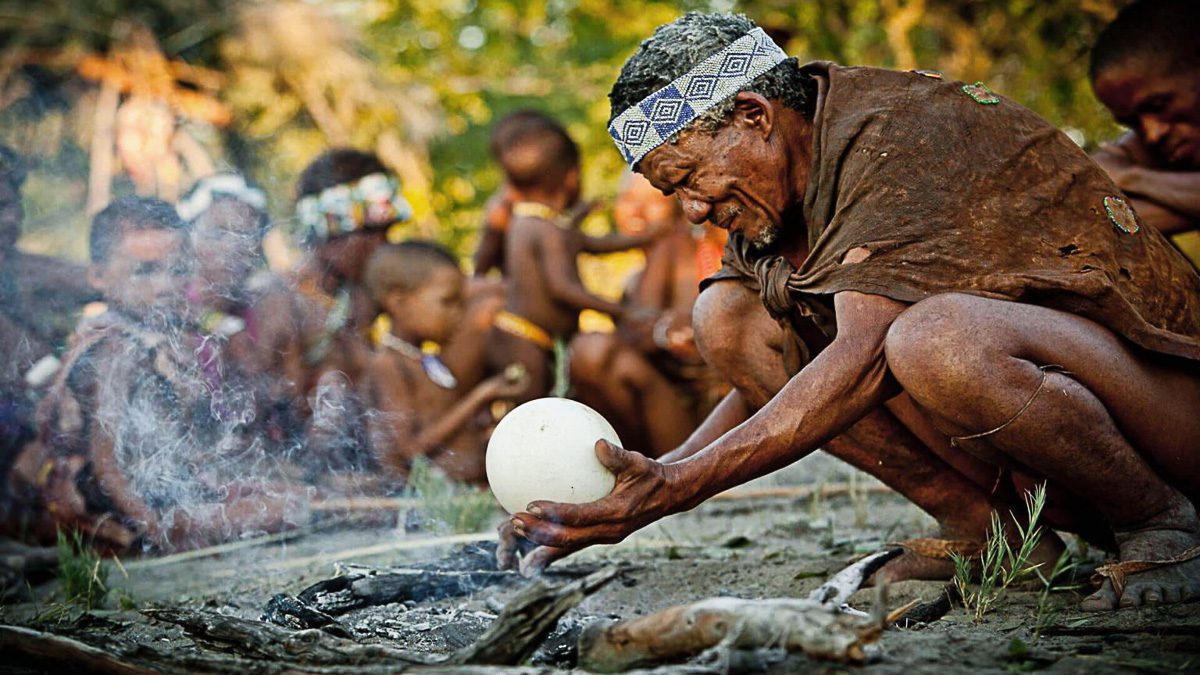
Southeast of Botswana’s aqueous Okavango, the Makgadikgadi salt pans stretch to the horizon, on their periphery, patches of shrubs and grasses attract a collection of hardy animals, including zebra, giraffe and hyena, with lion, leopard and elephant also occasionally visiting. Springbok and oryx – two creatures favouring Africa’s drier realms – can also be found here, and at night one might even spot aardwolves and bat-eared foxes.
Jack’s Camp is wonderfully opulent on this more challenging landscape, though the aquifers of the Okavango spring lush grasslands at intervals along its western borders. A wonderful combination of classic colonial and Arabian Nights, Jack’s Camp allows you to indulge in nature with all of the senses, and it is here too that you can enjoy a fascinating cultural African walking safari with the San bushmen.
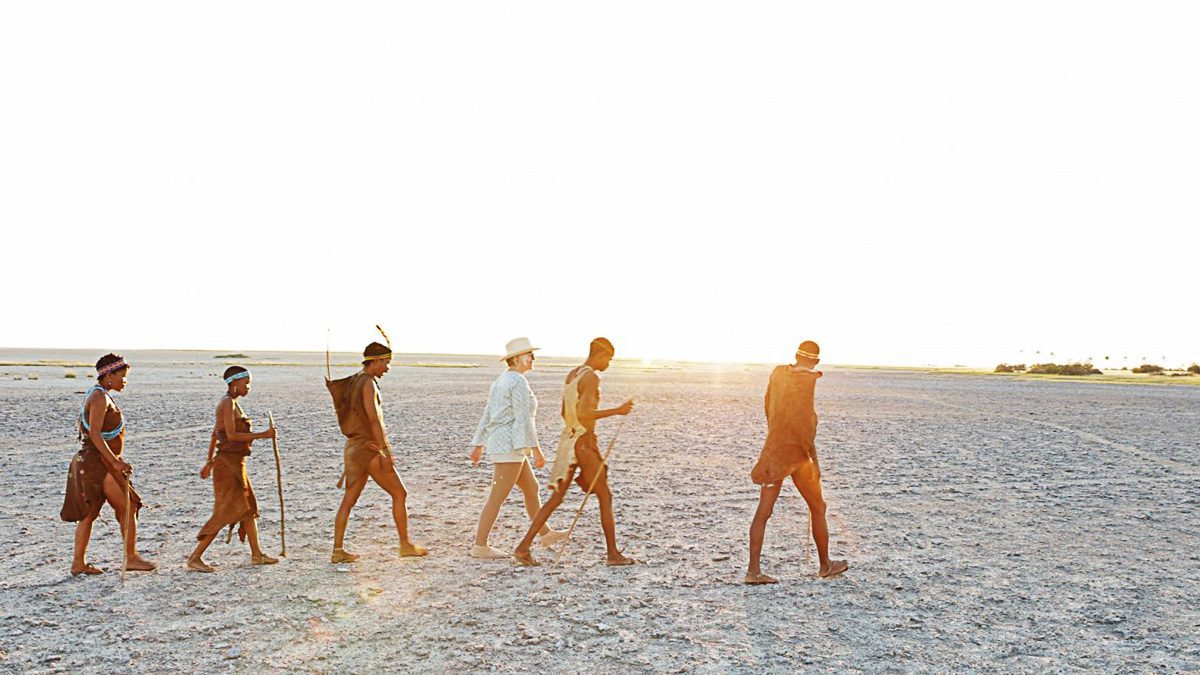
The San are remarkable navigators, endlessly knowledgeable in the ways of the land, and will impart this wisdom upon their guests, teaching them how to find water, how to track and identify animals and what nourishment might be found in such a sparse environment.
This unparalleled cultural hike is a wonderful experience in itself, but the is one more magical adventure to take: spending the night on the open salt pans. Guided and protected once more by the attentive San bushmen, one can venture onto the pans at dusk, spending the evening at the campfire under the most breathtakingly iridescent views of the expansive starfield overhead.
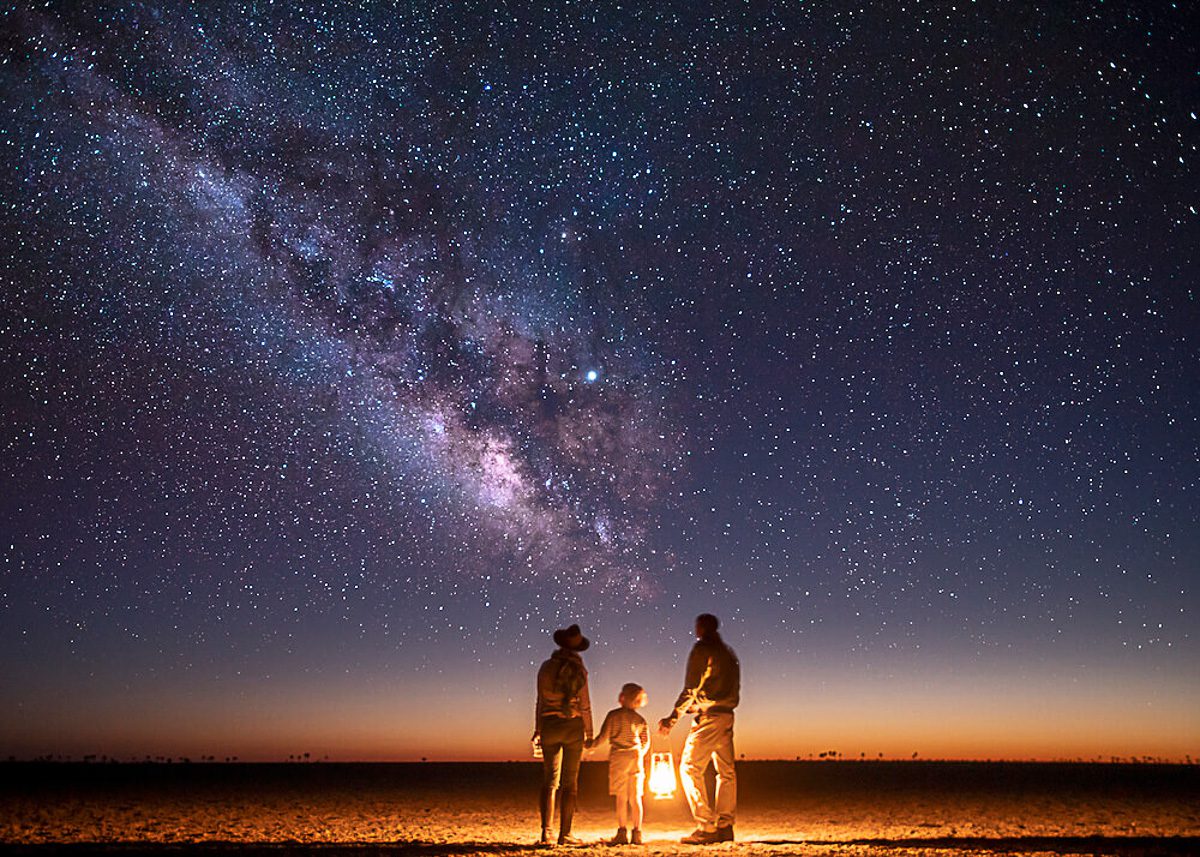
Zambia: Where it all Began
Zambia is universally declared as the home of the African walking safari, and few places lend themselves to explorations on foot more perfectly.
Though several destinations are worthy to be well-trodden by wandering safaris-goers, South Luangwa is the epicentre and most renowned. But in a park of over 3,500 square miles (9,000km²), renown does not equate to crowds, especially when the majority are on foot.
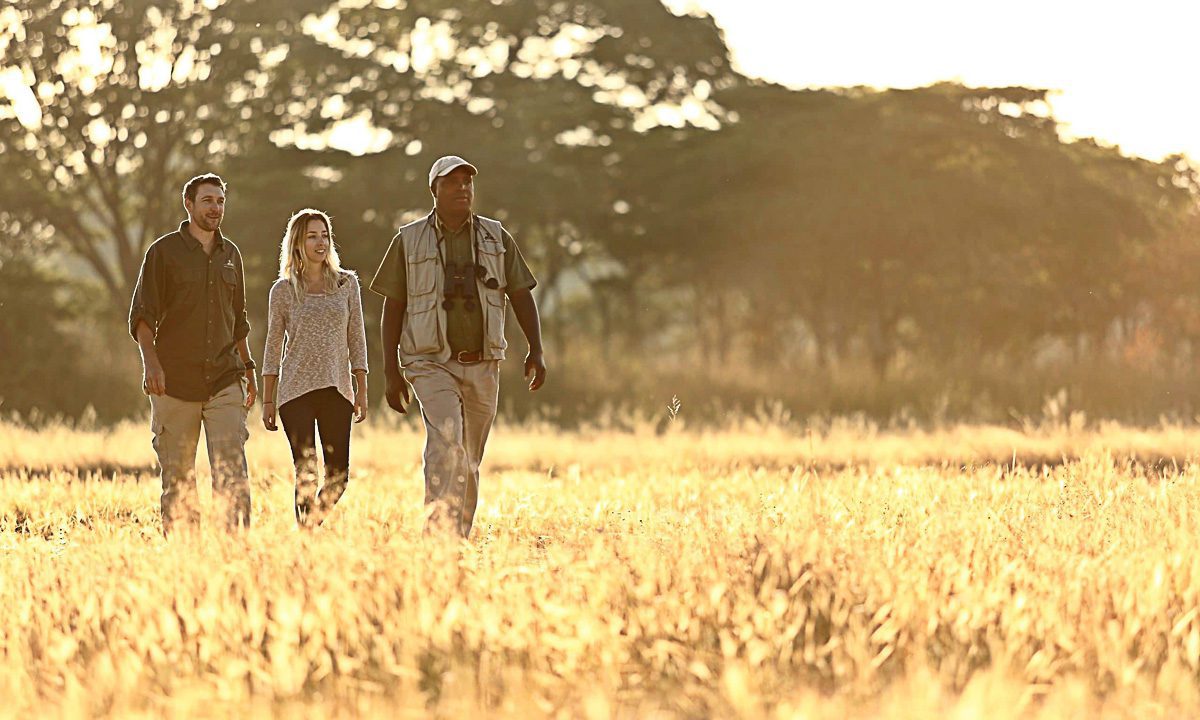
Intersected by the Luangwa River, this impressive national park is home to Africa’s highest concentration of elephant who inhabit the region with a vast and diverse spectrum of some iconic and rare wildlife.
Kudu and eland keep a watchful eye out for lion and leopard, spotted hyena cackle in the woodlands and from the steep river banks, one can gaze down upon hippo and Nile crocodiles basking in the sun.
Wildebeest, zebra and giraffe make common appearances on many game drives, but South Luangwa is the exclusive home to some sub-species – Thornicroft’s giraffe, Cookson’s wildebeest and Crawshay’s zebra – which are found nowhere else.
Another spectacular sight of the tall mudbanks of the Luangwa are the carmine bee-eaters. These vivid scarlet birds burrow into the mud, perforating the banks with their nests during the breeding season between August and September. Easily startled, a game vehicle is enough to spook them or send them deep within their nests, but approaching cautiously on foot, one can observe the colourful bee-eaters clinging to the embankment, clamouring for space and preparing to bring their offspring into the world.
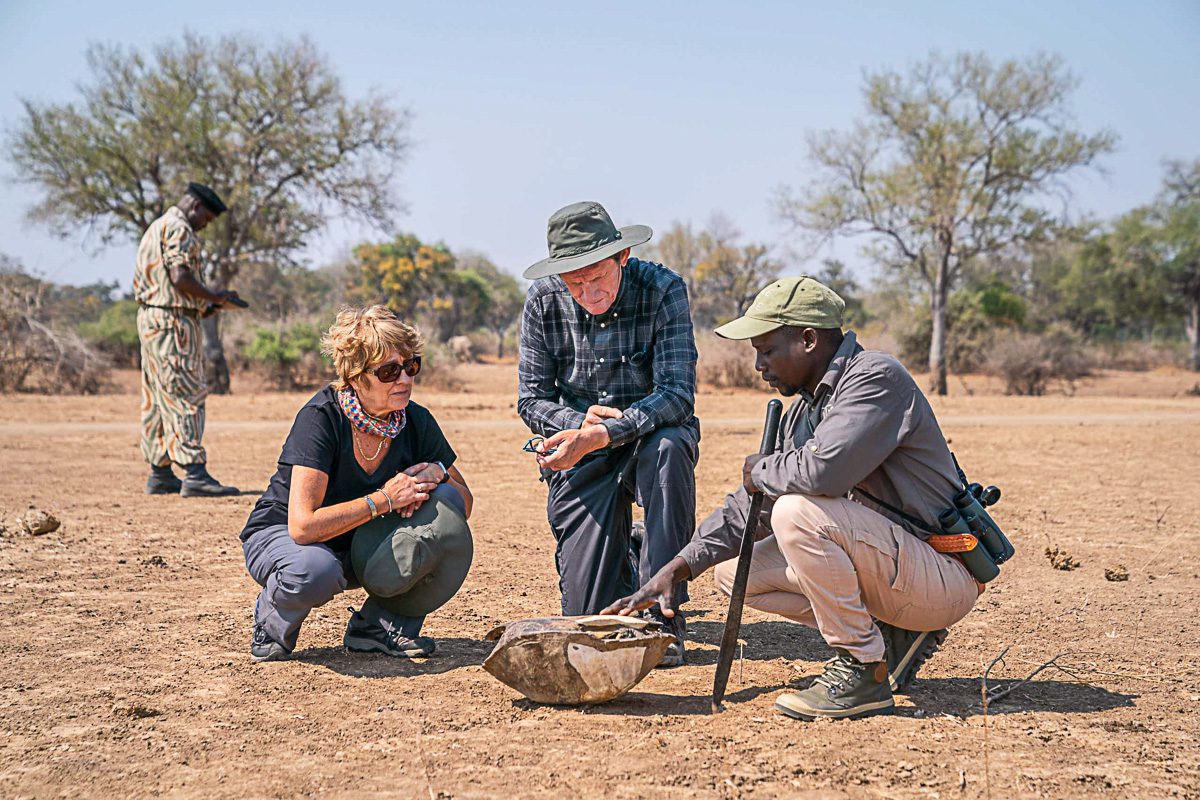
Similar to the Mara’s Kicheche camps, South Luangwa has a scattering of properties that can be connected by foot, a day’s walk or a multi-day hike separating them, with overnight camping prepared each evening for your arrival.
Being one of the preliminary African walking safari destinations, it is also the most experienced. Camps and lodges are well established, providing an excellent standard of accommodation while remaining low-impact to the surrounding environment, service in camp is impeccable, and guides and armed game scouts are some of the best in all of Africa.
Namibia – Wild Expanse
From the moment you arrive, Namibia beckons you from the door.
In the rich-red dunes of the Sossusvlei, you might wish to hike to their crests or walk amongst the skeletal remains of the desert trees. In Etosha National Park, lakes and rolling hills are traversed by lion and giraffe, and to the south, Fish River Canyon and Spitzkoppe provide stunning gorges and rock formations to explore.
For many parts of Namibia, one of the benefits is the lack of predation, or certainly its diminished risk, allowing for safer, freer travel. Caution is imperative, as it always is, but the lesser numbers of threatening wildlife allows for a certain level of independence in specific areas.
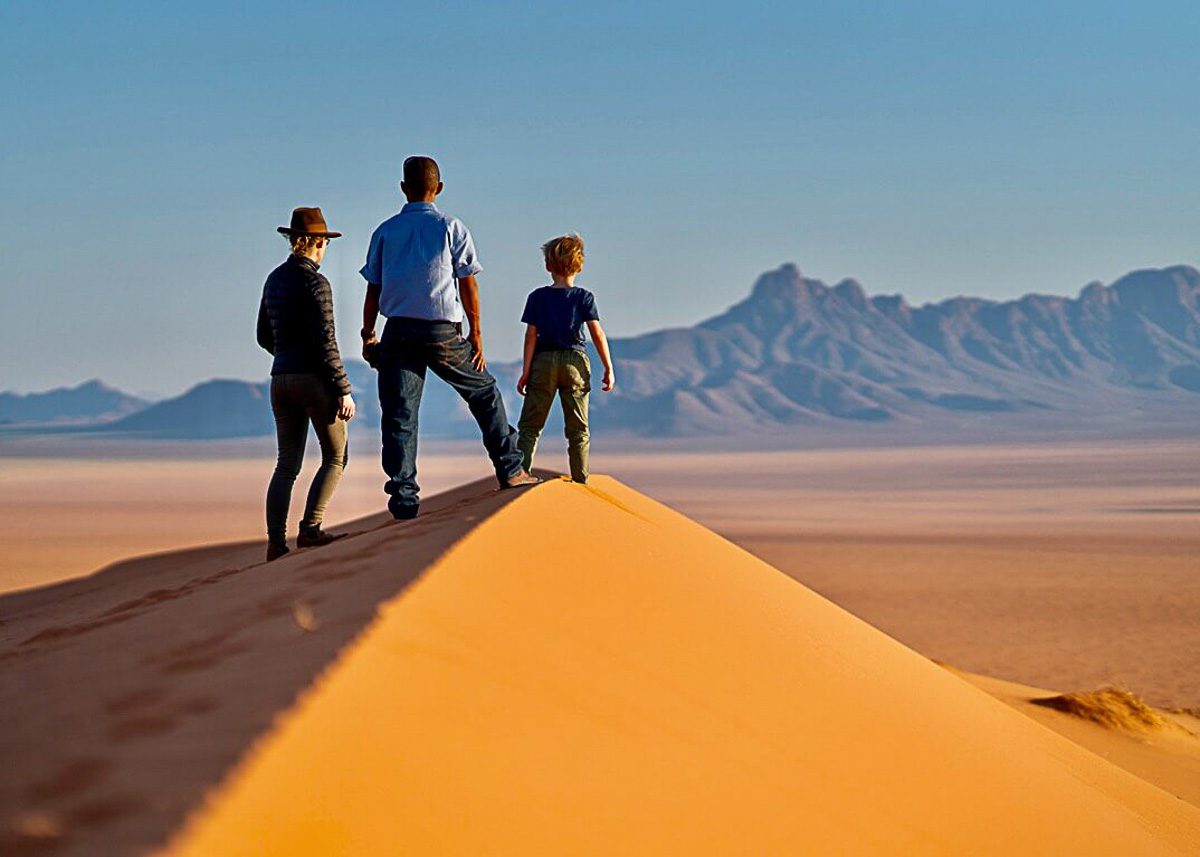
Though Etosha does indeed offer some aspect of a more familiar African walking safari, Namibia’s greatest appeal is in its dramatic and unique landscapes. The rolling dunes, sweeping plains, sparse vegetation and lonely trees are a canvas upon which the sun paints a new picture with every passing hour of the day. Dawn and dusk bring golden, crimson and violet hues to the sky, midday casts crisp, black shadows across the land, and at night the heavens open up into an impossibly beautiful canopy of stars.
Wandering through these changing scenes, one can’t quite believe this is not the artificial creation of some Hollywood sci-fi epic or that you haven’t fallen into the canvas of a Salvador Dali manifestation of surrealism.
Oryx trace the horizon, cheetah hold an ever-watchful gaze for unwary prey, and at your feet, dung beetles roll their dinner in reverse across the arid ground and lizards scamper upon your approach.
The contrast from expansive plains to the stark, crisp lines of dunescapes fracturing the vibrant blue sky, the outcrops of giant boulders randomly cast by some mighty, unseen hand, and the pure otherworldliness of Namibia make it utterly bewitching beyond words. And for those who enjoy photography, it is a world of inspiration at every turn.
Gorilla Trekking
Though it doesn’t fit the conventions or descriptions of an African walking safari, gorilla trekking is one of the most incredible activities you can enjoy on foot anywhere in the world.
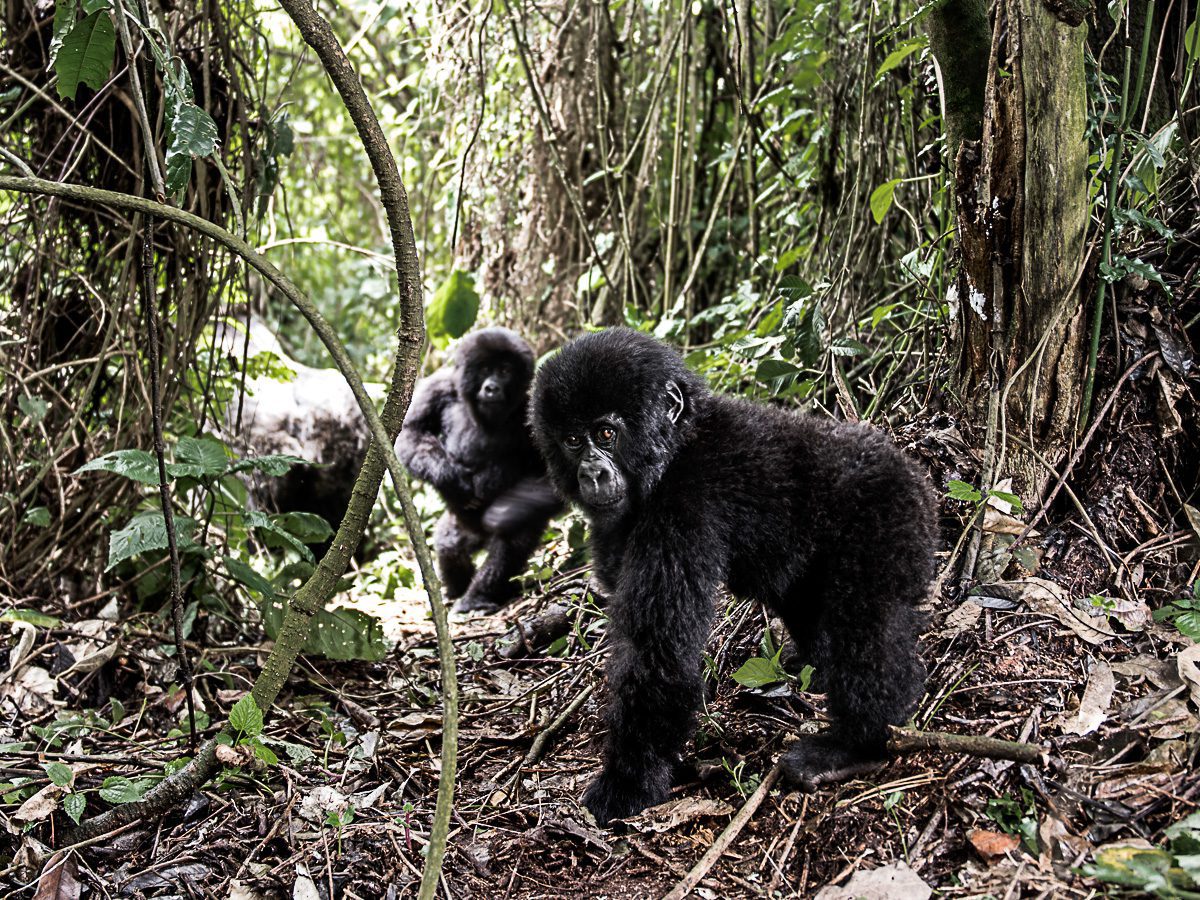
Our clients return time and again from Uganda or Rwanda, irrevocably changed by what they have witnessed, and while they might encompass a range of experiences in a larger itinerary, it is the gorillas that will steal their words away time and time again.
The anticipation of the mountain climb through dripping cloud forests, across streams, up winding trails, to finally emerge in a glade filled with our closest living relatives is swiftly justified, though this isn’t a walk in the park.
Though there is no need to be an expert mountain climber or professional triathlete, gorilla trekking does require a certain level of fitness. Clients of all ages undertake the hike through Bwindi Impenetrable Forest through the low-lying clouds to the gorilla habitat, but this journey can take anywhere from a couple of hours to half a day.
If it were possible, driving to the summit and viewing gorilla from a game vehicle would be to vastly diminish the experience, separating you from the experience of sharing moments with our cousins, and the very rare but possible chance of their interaction with you. It is, of course, strictly forbidden and dangerous for humans to approach the gorilla beyond a certain safe distance, but it is not unknown for curious youngsters or females in particular to bridge that divide of their own accord.
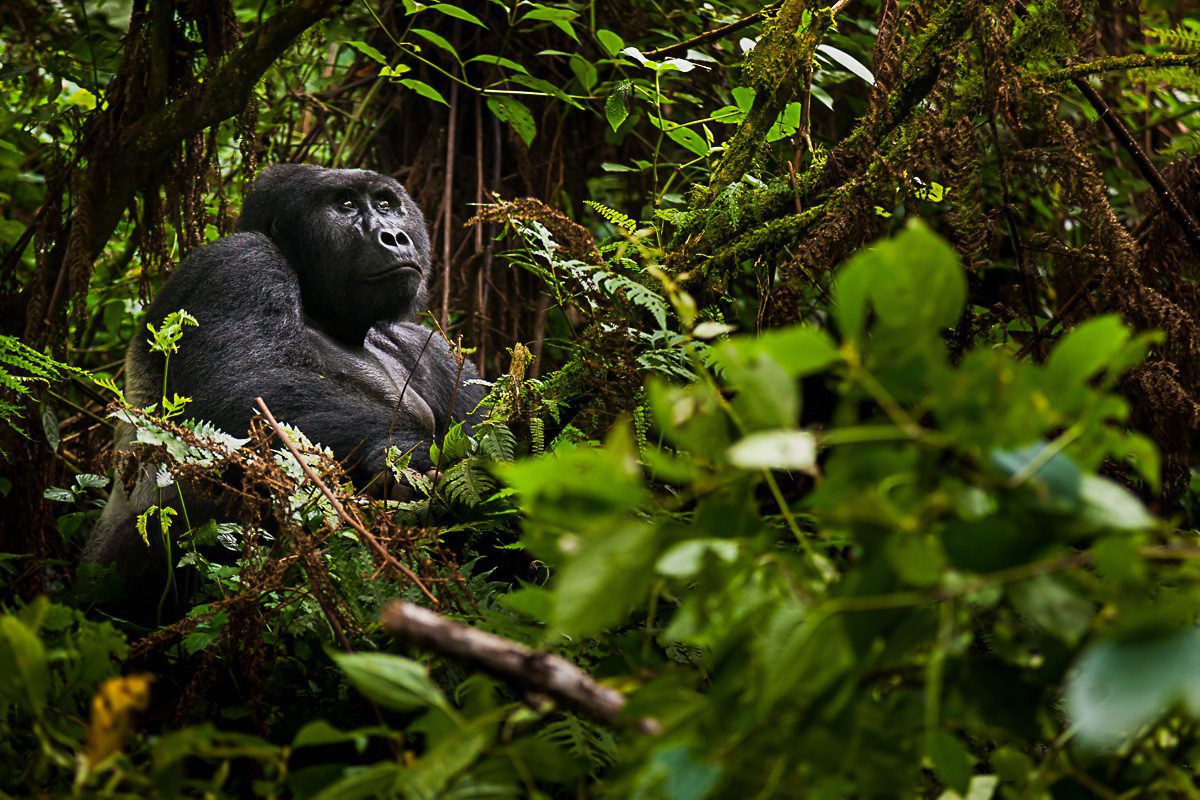
Likewise, if access to the endangered mountain gorillas was made any easier, it would pose a profound threat to their numbers, destroying their environment, opening the floodgates for tourism, and drastically increasing the risk of poaching.
The trek is as much part of this magical experience as is the sight of the troupe at rest, heightening the achievement and the rarity of what you are witnessing.
Tanzania & The Ngorongoro Crater
Though Tanzania has a small handful of walking safari options, ambiguous guidelines and relaxed regulations unfortunately allow for diminished quality, and it takes an expert travel advisor to source the very best; a travel advisor such as Rothschild Safaris,
Thankfully, with our many years of experience we have been able to partner with the most professional of operations, ensuring the highest standard of guiding, tracking and service. One of the few ways to take an African walking safari in Tanzania is with a fly camp. Taking you to more remote areas – carefully selected for both their abundance of wildlife and their safety for visitors – these fly camps allow you to completely lose yourself in the wild, though strictly in the metaphorical sense.
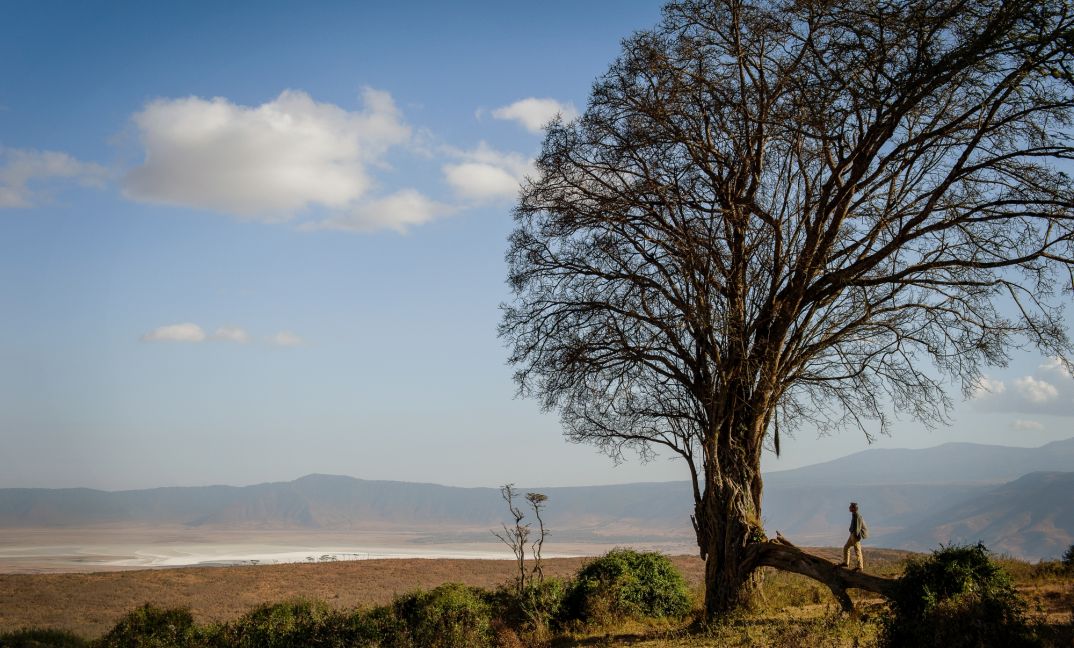
At certain times of year, the Serengeti lends itself perfectly to dramatic and abundant game drives, but its sheer expanse can often make game tracking quite challenging and walking safaris all but impossible. Though it is the most renowned of Tanzania’s parks for good reason, better for venturing through on foot is the smaller, though naturally prolific Selous Reserve. Selous is still immense, being the largest game reserve in Africa, but it offers wonderful variety, from lush grasslands and forests to riverside walks.
The flood plains of the Rufiji River, as it winds and divides throughout Selous, attract a wealth of wildlife and are favoured by elephant, hippo and crocodile. Giraffe can also be found in number, with black rhino and cheetah among the more elusive inhabitants.
The properties of Selous Game Reserve tend towards the more rustic, but for luxury, Tanzania has Tarangire National Park and the Chem Chem Lodges. Here, like in the Mara, you can join some of the world’s most elite trackers, the Maasai, and discover how they identify animals from the telltale signals they leave behind, tufts of fur, spoor and footprints.
Extensive hikes aren’t readily available, though substantial day walks through Tarangire will reveal large tuskers, big cats and the majestic wildlife of the bush. You can also take a more analytical approach, with guides abundantly knowledgeable and able to show you the remnants of hunts and long-deceased animals, giving you a more hands-on experience before indulging in an impeccably prepared and presented bush luncheon.
Tanzania also has several lakes, including Manyara and Tanganyika, both of which are fascinating to visit on foot.
Finally, the Ngorongoro Conservation Area gives you a very real and present sense of scale. As you walk the perimeter of the vast Ngorognoro caldera, you cannot help but be astounded at the magnitude of this immense UNESCO World Heritage site. Rhino, lion, buffalo, zebra and elephant can be seen throughout the region, and guides again will pre-arrange a fully-furnished lunch for you as a rather indulgent break to your day’s walk.
Though the plains of the Ngorongoro can’t be ventured across by foot for safety reasons, the crater’s periphery affords you an exceptional view and the chance to observe a wider expanse than if on the crater floor. However, the plains aren’t entirely off limits, and game drives and helicopter transfers do allow you the opportunity to step from a vehicle and enjoy a gourmet picnic in the wild.
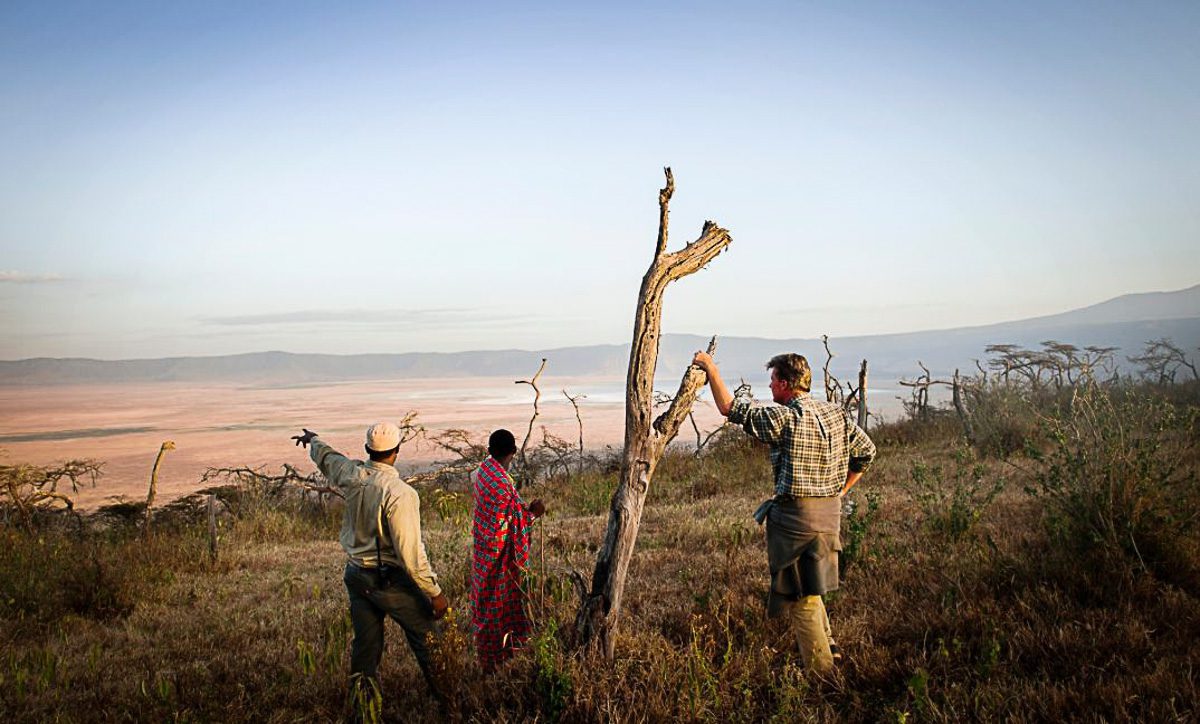
One can only stand in awe, wondering at the volcanic eruption that once took place here many thousands of years ago, but what is left behind is a garden of Eden, a lost world that is best experienced without the drone of machinery and the inhibitions of a vehicle.
Venturing into the wild on foot, even a hundred metres from camp, expands your awareness and appreciation of the African landscape exponentially. Even a stroll of a couple of hours can reveal hidden treasures of the bushlands that one might never get to witness from a vehicle.
For some more significant African walking safaris, such as gorilla trekking or a multi-day adventure, a certain level of fitness is required, but if you wish to experience Africa on foot, there is always a walk available. Simply tell your Travel Designer and we will ensure that your next African adventure is a walk in the park.

